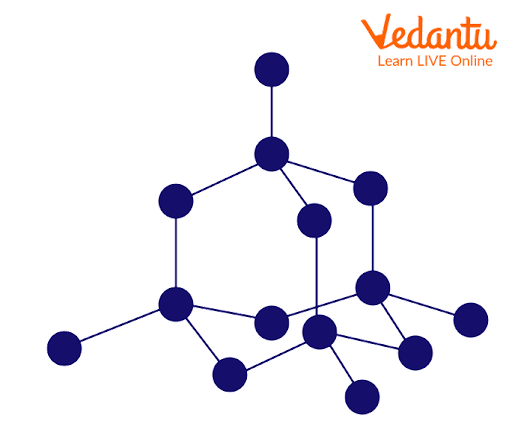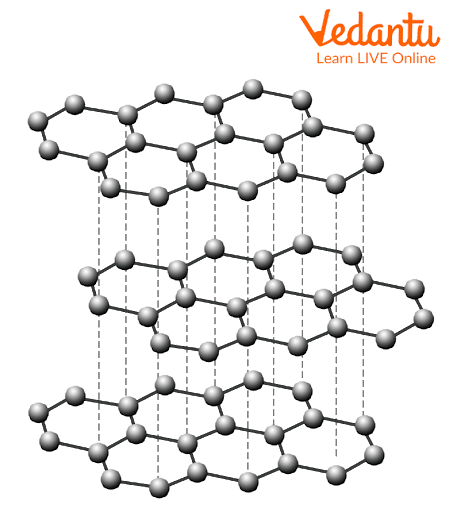




Why Can Carbon Form So Many Different Compounds?
The versatile nature of carbon and its bonding is a cornerstone of JEE Main Chemistry and underpins the huge diversity of organic compounds. This property arises mainly from carbon’s unique ability for catenation (self-linking), tetravalency (forming four bonds), and the ability to make stable multiple bonds. As a result, carbon is present in biomolecules, fuels, polymers, and more. Mastering why carbon is so adaptable in bonding will boost your confidence for organic chemistry problems in JEE.
Importance of Carbon’s Versatility in Organic Chemistry
Carbon forms the backbone of organic chemistry, enabling countless molecular structures. The versatile nature of carbon and its bonding allows carbon atoms to create chains, branches, and rings. This also leads to the formation of millions of stable compounds—a key reason why carbon chemistry dominates life and industry. For JEE aspirants, understanding this concept supports grasping topics like isomerism, functional groups, and reaction mechanisms.
Electronic Structure and Tetravalency of Carbon
A carbon atom has the electronic configuration 1s2 2s2 2p2. It uses its four valence electrons to form four covalent bonds with other atoms or itself. This property—called tetravalency—ensures that each carbon atom achieves a stable electronic arrangement (octet rule), making its compounds highly stable. This is the primary reason for its versatile bonding and ability to make large molecules.
Catenation: Self-Linking of Carbon Atoms
Catenation is the property where carbon atoms link with each other through single, double, or triple covalent bonds, forming straight chains, branched chains, or ring structures. Carbon’s small atomic size and strong C–C bonds make these structures stable. Catenation explains why organic molecules can be so large (like proteins) or complex (like DNA).
Saturated and Unsaturated Carbon Compounds
Compounds of carbon can be grouped based on their bonding:
- Saturated compounds contain only single (C–C) bonds (e.g., alkanes).
- Unsaturated compounds have at least one double (C=C) or triple (C≡C) bond (e.g., alkenes and alkynes).
| Type | Bonding | Example | General Formula |
|---|---|---|---|
| Saturated | Single bonds only (C–C) | Methane (CH4), Ethane (C2H6) | CnH2n+2 |
| Unsaturated | Double/Triple bonds (C=C, C≡C) | Ethene (C2H4), Ethyne (C2H2) | CnH2n, CnH2n-2 |
Knowing these differences is critical for naming compounds, predicting reactivity, and identifying homologous series on the JEE paper.
Bonding Types in Carbon Compounds
Carbon can form three basic types of covalent bonds:
- Single bond: Shares one pair of electrons (e.g., CH4).
- Double bond: Shares two pairs of electrons (e.g., C2H4).
- Triple bond: Shares three pairs of electrons (e.g., C2H2).
These bonding variations result in structural diversity and different reactivities, which are often tested in organic reaction questions.
Allotropes: Diverse Forms of Carbon
Allotropes are different structural forms of the same element. Carbon has several important allotropes:
- Diamond: Each carbon atom forms four single bonds, producing a hard, transparent 3D lattice.
- Graphite: Carbon atoms form layers of hexagonal rings with free electrons, resulting in soft, slippery, and electrically conductive properties.
- Fullerenes: Spherical or tubular clusters of carbon atoms, notable for unique chemical and physical properties.
Structure of Diamond shows the rigid tetrahedral bonding, while graphite demonstrates layers and delocalised electrons.

Structure of Graphite can help you visualise its layer-dependent electrical conductivity, a classic JEE question.

Carbon in Biomolecules and Industry
Nearly all biomolecules—proteins, carbohydrates, nucleic acids (DNA/RNA), and lipids—are built from carbon skeletons. Carbon’s bonding properties also enable the creation of fuels, medicines, plastics, detergents, and synthetic fibres. Questions often test recognition of carbon’s presence and arrangement in such molecules.
What Makes Carbon So Versatile?
Key factors that give rise to the versatile nature of carbon and its bonding are:
- Strong, stable C–C and C–H bonds (high bond enthalpy).
- Catenation: ability to form long, stable chains and rings with itself.
- Tetravalency: formation of four covalent bonds maximises bonding with many elements.
- Ability to form single, double, and triple bonds with C, H, N, O, S, etc.
- Compact atomic size, which supports strong overlap in covalent bonding.
Isomerism is another direct consequence. For a given formula, many different compounds (isomers) can exist due to versatile bonding. The types of isomerism arise from arranagement differences in chains, positions, or functional groups.
Types of Isomerism are best understood with a simple flowchart approach in JEE.

Practical Applications: Naming and Recognising Carbon Compounds
JEE Main regularly tests naming rules and recognition of compound types. Practice questions rely on understanding:
- The basic structure (chain, ring, branched chain) formed by carbon’s catenation.
- Whether a compound is saturated or unsaturated.
- The types of isomerism possible.
- The presence of functional groups (alcohols, acids, halides).
Fluency in naming compounds comes by combining tetravalency, catenation, and bonding properties with IUPAC rules. Use Vedantu’s JEE Chemistry resources for more MCQs and solved examples.
Summary Table: Reasons for Carbon’s Versatility
| Reason | Details |
|---|---|
| Tetravalency | Forms four bonds; enables rich bonding variety |
| Catenation | Self-linking produces chains/rings; expands structure types |
| Multiple Bonds | Can make double/triple bonds; increases reactivity and shapes |
| Small Size | Enhances bond strength, overlap, and stability |
Connected JEE Chemistry Topics on Vedantu
- Hybridization of Carbon: Concept of sp, sp2, sp3 hybridisation in carbon compounds.
- Covalent Bonding in Carbon: In-depth look at electron sharing and bond types.
- Hydrocarbons: Saturated and unsaturated hydrocarbons explained.
- Allotropes of Carbon: Details of graphite, diamond, fullerenes and their properties.
- Biomolecules: Carbon’s structural role in proteins, nucleic acids, lipids, and carbohydrates.
- Structural Isomerism: Impact of versatile bonding on isomer numbering.
- Hydrocarbons Practice Paper: Check conceptual clarity with JEE-level questions.
- Polymers: Carbon chain formation in plastics and synthetic materials.
- Naming Alkenes, Alkynes, and Alkanes: Master naming techniques grounded in carbon’s versatility.
- Chemical Bonding: Core theory for understanding carbon’s unique behaviour.
Focus on the versatile nature of carbon and its bonding to strengthen your JEE Main organic chemistry base. Review related Vedantu resources and practice solving conceptual and application-based problems to ensure mastery for exam day.
FAQs on Versatile Nature of Carbon and Its Unique Bonding
1. What is meant by the versatile nature of carbon?
Carbon's versatile nature refers to its unique ability to form a wide variety of stable compounds due to its four valence electrons. Key reasons include:
- Tetravalency: Forms four covalent bonds with other atoms
- Catenation: Links to itself, forming chains, rings, and branches
- Multiple Bond Formation: Creates single, double, or triple bonds
2. What is the bonding versatility of carbon?
Bonding versatility of carbon is its ability to make various types of bonds with itself and other elements.
- Forms single, double, and triple covalent bonds
- Readily bonds with elements like hydrogen, oxygen, nitrogen, etc.
- Allows creation of complex structures: chains, rings, branched compounds
3. What is catenation? Give an example.
Catenation means the ability of carbon atoms to form long chains and rings by bonding to other carbon atoms.
- Enables formation of straight, branched, and cyclic compounds
- Example: Ethane (C2H6), propane (C3H8), benzene (C6H6), etc.
4. How does the tetravalency of carbon affect its bonding?
Tetravalency means carbon has four valence electrons and can form four bonds.
- Enables stable covalent bond formation with other atoms
- Allows for branching, chains, and ring structures
- Leads to chemical diversity and a vast number of organic compounds
5. Why is carbon able to form so many compounds?
Carbon’s ability to form numerous compounds stems from its properties:
- Tetravalency: Can make four bonds
- Catenation: Can bond to itself in long chains
- Forms single, double, and triple bonds
- Bonds strongly with common elements like H, O, N
6. What are the differences between saturated and unsaturated carbon compounds?
Saturated carbon compounds contain only single bonds; unsaturated compounds have at least one double or triple bond.
- Saturated: Alkanes (e.g., ethane, propane), less reactive
- Unsaturated: Alkenes (double bond) & alkynes (triple bond), more reactive
7. Name the main allotropes of carbon and their properties.
The main allotropes of carbon are:
- Diamond: Hard, transparent, non-conductor, used in cutting tools
- Graphite: Soft, black, conductor, used in pencils and electrodes
- Fullerenes: Spherical structure (C60), used in nanotechnology
8. How does the structure of a carbon atom contribute to its bonding capabilities?
Carbon's atomic structure enables it to form stable and diverse bonds.
- Has four valence electrons (2s² 2p²)
- Requires four more electrons for stability (octet rule)
- Can share electrons to make four covalent bonds
- Leads to a huge variety of molecular geometries and compounds
9. Is the ability for catenation unique to carbon among all elements?
Catenation is most prominent in carbon but also seen in other Group 14 elements like silicon and sulfur.
- Carbon forms the longest and most stable chains
- Silicon and sulfur show limited catenation
- This superior property makes carbon the backbone of organic chemistry
10. How do you distinguish between single, double, and triple bonds in carbon compounds?
Distinguishing among single, double, and triple bonds is based on the number of shared electron pairs between carbon atoms:
- Single Bond: One shared pair (C–C), found in alkanes
- Double Bond: Two shared pairs (C=C), found in alkenes
- Triple Bond: Three shared pairs (C≡C), found in alkynes























